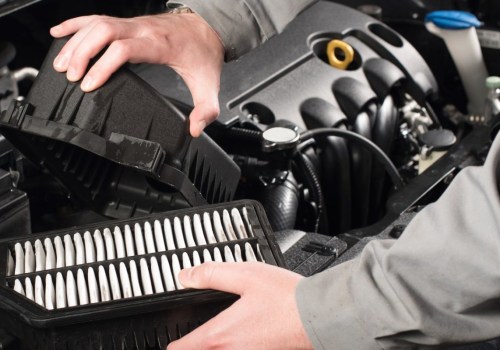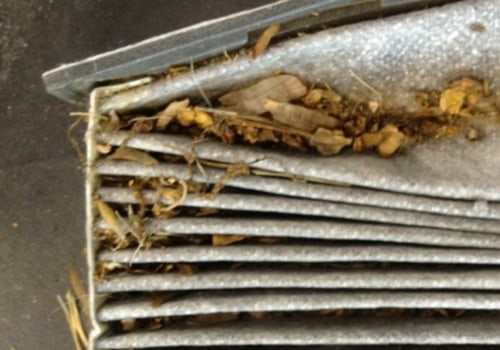MERV 13 HVAC Furnace Air Filters
This examines the efficacy of MERV 13 HVAC furnace air filters in enhancing indoor air quality. By elucidating the significance of MERV ratings, detailing the operational mechanisms of MERV 13 filters, and exploring maintenance practices, this study aims to provide a comprehensive analysis of their benefits and cost-effectiveness. The investigation synthesizes empirical evidence with consumer feedback to offer informed recommendations regarding the adoption of MERV 13 filters for improved air filtration systems.
Importance of Indoor Air Quality
The importance of indoor air quality lies in its direct impact on human health and well-being, as well as the potential to exacerbate respiratory conditions and allergies. Indoor air pollution can result from various sources such as inadequate ventilation, combustion processes, and the release of volatile organic compounds from building materials or household products. Poor indoor air quality has been linked to a range of health issues, including respiratory infections, asthma, cardiovascular diseases, and even cognitive impairment.
Improving indoor air quality can lead to significant health benefits by reducing the risk of developing these adverse health outcomes. Additionally, enhancing indoor air quality can have positive environmental impacts by decreasing energy consumption associated with heating or cooling poorly ventilated spaces. Implementing measures such as proper ventilation systems, regular maintenance of HVAC systems, and using high-efficiency air filters like MERV 13 filters can help mitigate indoor air pollution levels and promote a healthier indoor environment for occupants.
Understanding MERV Ratings
Indicating the level of effectiveness in capturing small particles, MERV ratings provide a standardized measure for comparing various types of filtration systems. Airborne particles vary in size and composition, ranging from visible dust and pollen to microscopic allergens and bacteria. Filtration efficiency is crucial in removing these contaminants from indoor air to maintain good air quality. The Minimum Efficiency Reporting Value (MERV) scale assigns a rating to filters based on their ability to trap different particle sizes. A higher MERV rating indicates better filtration performance, capturing smaller particles more effectively.
Understanding MERV ratings is essential for selecting an appropriate filter that aligns with specific indoor air quality needs. Different environments require varying levels of filtration efficiency depending on factors like occupancy, activities conducted indoors, and sensitivity to airborne allergens. By considering the MERV rating along with other factors such as airflow resistance and system compatibility, individuals can choose a filter that balances effective particle capture with optimal HVAC system performance.
Benefits of MERV 13 Filters
One notable advantage of MERV 13 filters compared to lower-rated options lies in their increased ability to capture smaller particles, thereby enhancing indoor air quality. The filter efficiency of MERV 13 filters is higher than that of lower-rated filters, making them more effective at trapping airborne contaminants such as dust, pollen, mold spores, pet dander, and even bacteria and viruses. This enhanced efficiency is crucial in improving overall indoor air quality by reducing the amount of harmful particles circulating within a space.
Airborne contaminants can pose health risks when inhaled regularly, especially for individuals with respiratory conditions or allergies. By using MERV 13 filters in HVAC systems, a greater proportion of these contaminants can be removed from the air before it is circulated throughout a building. This not only benefits the occupants' health but also helps in maintaining cleaner ductwork and HVAC equipment by reducing the buildup of particulate matter within the system. Ultimately, the use of MERV 13 filters contributes to a healthier indoor environment by effectively capturing a wider range of airborne pollutants.
How MERV 13 Filters Work
Enhancing indoor air quality involves the increased capture of smaller particles by higher-rated filters like MERV 13. These filters play a crucial role in reducing airborne contaminants within HVAC systems. MERV, or Minimum Efficiency Reporting Value, rates the effectiveness of air filters based on their filtration efficiency. MERV 13 filters are designed to remove a high percentage of particles from the air as they circulate through the system.
Particle removal is a key function of MERV 13 filters, as they can capture smaller particles that lower-rated filters might miss. The filtration efficiency of MERV 13 filters enables them to trap various pollutants such as dust, pollen, mold spores, and pet dander effectively. By capturing these contaminants, MERV 13 filters contribute significantly to improving indoor air quality.
Efficient particle removal also helps enhance air circulation within HVAC systems. With fewer contaminants circulating in the air, airflow is less obstructed, allowing for better ventilation throughout indoor spaces. This improved air circulation not only promotes better breathing conditions but also reduces the likelihood of allergens and pollutants settling within the environment.
Installation and Maintenance Tips
The proper installation procedures for MERV 13 filters are crucial to ensure their effectiveness in maintaining indoor air quality. Following the manufacturer's guidelines and using the correct techniques can prevent air leaks and maximize filtration efficiency. Adhering to a recommended maintenance schedule is essential to keep the filters functioning optimally over time, prolonging their lifespan and preserving air quality in HVAC systems.
Proper installation procedures
Proper installation procedures for MERV 13 HVAC furnace air filters involve ensuring that the filter is securely placed in the filter housing and that all seals are intact to prevent air bypass. Proper handling of the filter during installation is crucial to maintain its integrity and efficiency. Care should be taken not to damage the filter media or frame, as this can compromise its effectiveness in capturing particles. Filter efficiency, a key aspect of MERV 13 filters, relies on correct installation to maximize their performance. By following recommended procedures and guidelines provided by manufacturers, users can ensure that these high-efficiency filters operate at their full capacity, providing optimal indoor air quality while maintaining system airflow.
Recommended maintenance schedule
Regular maintenance tasks such as replacing filters and cleaning components are crucial in ensuring optimal performance of the HVAC system. Filter replacement is a key aspect of this maintenance schedule, as filters play a vital role in trapping dust, debris, and other particles from circulating through the system. The frequency of filter replacement depends on various factors including the type of filter used, indoor air quality, and the manufacturer's recommendations. Typically, standard filters have a lifespan ranging from one to three months before requiring replacement. However, high-efficiency filters such as MERV 13 HVAC furnace air filters may have longer lifespans due to their ability to capture smaller particles effectively. Adhering to a recommended maintenance schedule is essential for promoting energy efficiency and prolonging the lifespan of HVAC systems.
Cost-Effectiveness of MERV 13 Filters
The cost-effectiveness of MERV 13 filters can be analyzed through the long-term savings they offer on energy bills. By efficiently capturing smaller particles, these filters reduce the workload on HVAC systems, potentially leading to lower energy consumption and decreased operational costs over time. Additionally, the extended lifespan of an HVAC system resulting from reduced strain and better air quality with MERV 13 filters further contributes to their economic benefits.
Long-term savings on energy bills
Incorporating MERV 13 HVAC furnace air filters can potentially result in reduced energy consumption and subsequently lead to long-term savings on energy bills. The enhanced filter performance of MERV 13 filters allows for increased energy efficiency within heating, ventilation, and air conditioning systems. By effectively capturing smaller particles such as dust, pollen, and mold spores, these filters reduce the workload on the HVAC system, promoting better airflow and optimal operation. This improved efficiency translates into lower energy usage over time, which can contribute to cost savings on utility bills. Additionally, the longevity of MERV 13 filters compared to lower-rated options further enhances their potential for sustained energy conservation and financial benefits in residential or commercial settings.
Extended lifespan of HVAC system
Enhanced filter performance can potentially prolong the operational lifespan of heating, ventilation, and air conditioning systems. By using high-efficiency filters like MERV 13-rated ones, HVAC systems can maintain optimal airflow while trapping a greater amount of particles that could otherwise accumulate in the system. This increased filtration efficiency not only improves indoor air quality but also contributes to energy efficiency by reducing the workload on the system. With cleaner components and improved airflow, the HVAC system is less likely to experience malfunctions or breakdowns, leading to enhanced system longevity. Therefore, investing in quality air filters with higher MERV ratings can be a cost-effective strategy for promoting energy efficiency and extending the lifespan of HVAC systems.
Customer Reviews and Testimonials
Analysis of customer reviews and testimonials provides valuable insights into the effectiveness and satisfaction levels associated with MERV 13 HVAC furnace air filters. These assessments offer a glimpse into how well these filters perform in real-world settings and how satisfied customers are with their performance. Customer satisfaction is a crucial aspect when evaluating the overall quality of air filters, as it directly reflects users' experiences with the product.
When examining customer feedback on MERV 13 HVAC furnace air filters, filter performance emerges as a central theme. Customers often highlight the ability of these filters to capture a wide range of airborne particles, including dust, pollen, pet dander, and other allergens. Many reviews commend the improved air quality that results from using MERV 13 filters, indicating their effectiveness in maintaining clean and healthy indoor environments.
Overall, customer reviews and testimonials play an essential role in gauging the success of MERV 13 HVAC furnace air filters in meeting user expectations regarding filter performance and customer satisfaction.
Frequently Asked Questions
Can MERV 13 filters be used in all types of HVAC systems?
Merv 13 filters offer high filtration efficiency but may restrict airflow in some HVAC systems. Compatibility issues can arise due to their size and density, potentially causing strain on the system. Consider consulting a professional before installation.
Are MERV 13 filters recyclable or environmentally friendly?
Filters with higher MERV ratings like 13 are not inherently recyclable, but some manufacturers offer recycling programs. Proper disposal is crucial to minimize environmental impact. Consider energy-efficient options to reduce waste and enhance sustainability.
How often should MERV 13 filters be replaced?
The lifespan of filters is determined by the manufacturer's recommendation, environmental factors, and usage. Replacement frequency varies but typically ranges from 3 to 6 months. Cost-effectiveness and budget considerations should be taken into account when deciding on replacement intervals.
Do MERV 13 filters help with reducing allergens like pet dander or mold spores?
Merv 13 filters are effective in reducing allergens like pet dander and mold spores, contributing to allergy relief and improving indoor air quality. They enhance air purification by capturing smaller particles that lower MERV-rated filters may not trap.
Are there any potential drawbacks or side effects of using MERV 13 filters in a home HVAC system?
Potential drawbacks of using high-efficiency filters like MERV 13 include increased cost due to filter replacements, higher energy consumption as the HVAC system works harder, and potential restrictions in airflow. However, they offer improved air quality and health benefits.
Here is the nearest branch location serving the Boca Raton FL area…
Filterbuy HVAC Solutions - Pompano Beach FL
2521 NE 4th Ave, Pompano Beach, FL 33064
(754) 484-4453
https://maps.app.goo.gl/xjqa9kZYdL35ThcV9
Here are driving directions to the nearest branch location serving Boca Raton…



